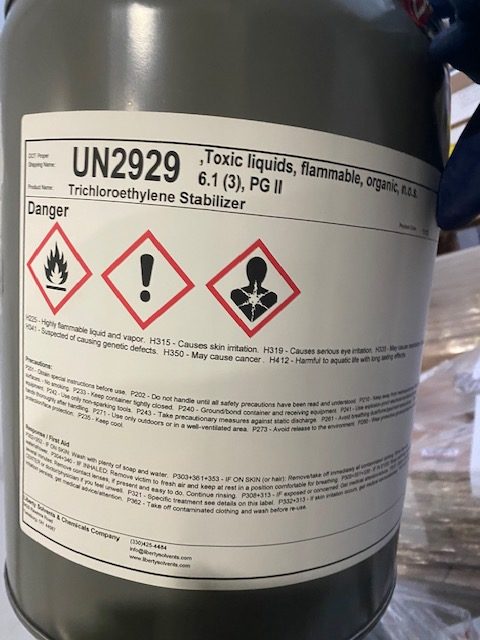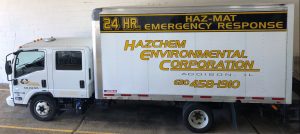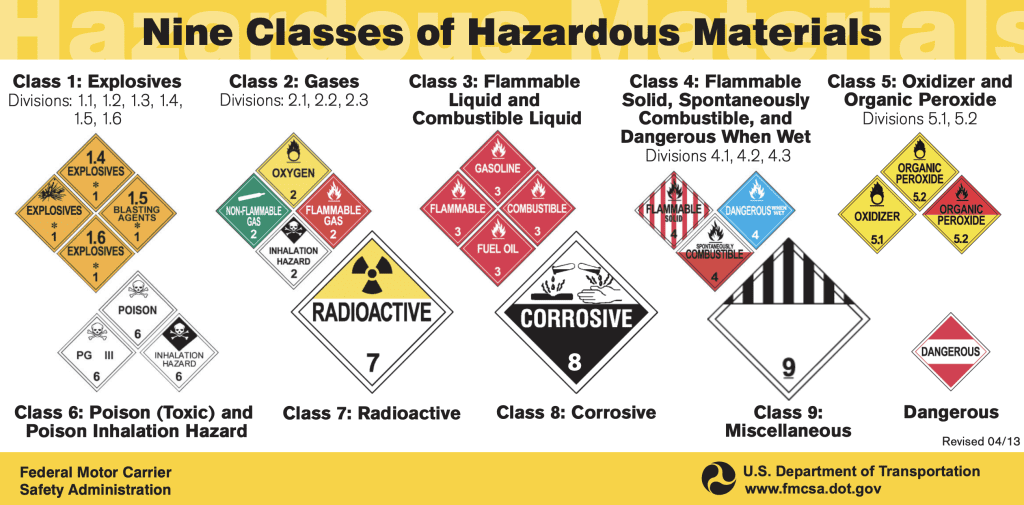TOXIC WASTE DISPOSAL

Hazardous Waste vs Toxic Waste; What’s the Difference?
Hazardous waste management is a critical concern for both environmental preservation and public safety. To effectively address this issue, it’s essential to differentiate between two key categories: hazardous waste and toxic waste.The primary distinction between hazardous waste and toxic waste lies in their potential impact. While all toxic waste is hazardous, not all hazardous waste is necessarily toxic. Hazardous waste can include materials that are flammable, corrosive, or reactive without being inherently toxic. Toxic waste, however, always presents a risk to human health due to its poisonous nature. This is why proper toxic waste disposal is crucial. In the event of a toxic spill , toxic chemical spill or a toxic truck spill on the highway, HazChem is available 24/7 with over 30 years of experience in toxic waste cleanup and toxic waste disposal.
Toxic Waste:
Toxic waste specifically refers to substances that are poisonous or harmful when ingested or absorbed. These substances can have severe health consequences if not managed correctly. Toxic waste often includes materials containing elements like mercury, lead, or other harmful chemicals.
Examples of Toxic Waste:
Let’s delve into some illustrative examples of Toxic Waste. The Toxic Substances Control Act (TSCA) primarily centers around three key materials known for their toxic properties.
1. Polychlorinated Biphenyls (PCBs): PCBs, the first entry on this list, were once prevalent before their prohibition in 1979. However, remnants of products and equipment from that era still exist. For instance, hydraulic machinery and dielectric fluids manufactured prior to 1979 may retain elevated levels of PCBs.
2. Asbestos: Unlike most hazardous materials, asbestos is a naturally-occurring mineral. Nonetheless, this natural origin doesn’t diminish its potential danger compared to other hazardous or toxic substances. Asbestos is commonly encountered in older buildings with dated insulation and historic construction projects.
3. Lead-Based Paint: Another inclusion in the toxic waste category is lead-based paint. Similar to asbestos, this type of paint is typically found in older residential homes, commercial structures, and products manufactured before 1978. Exposure to lead-based paint can result in neurological and developmental issues, particularly in children, and may even contribute to cancer.
By recognizing these examples, we gain a clearer understanding of substances falling under the umbrella of toxic waste, emphasizing the importance of responsible management and toxic waste disposal.
Types of Toxic Waste:
Medical Waste:
Medical waste encompasses a wide range of materials, including tissues, tissue samples, or fluids that may carry infectious microorganisms and pathogens. It also includes containers and equipment used to handle and transport these materials. HazChem offers Biohazard cleanup services and Medical Waste Disposal.
Chemical Waste:
Chemical waste is a diverse category that includes solid waste materials possessing characteristics like acute toxicity, flammability, corrosiveness, carcinogenicity, mutagenicity, teratogenicity, or the potential for dangerous reactions when mixed with other chemicals. This category also covers heavy metals such as arsenic, cadmium, chromium, lead, and mercury, among others that could lead to toxic chemical spills.
Radioactive Waste:
Radioactive waste originates from substances that emit or absorb ionizing radiation. This category encompasses materials that encounter or are used in conjunction with radioactive elements and compounds. Examples include the water and rods used in moderating nuclear reactions within power plants.
Some Toxic Wastes That Pose Health Risks:
- Arsenic – a carcinogenic element used in electrical circuits, wood preservatives, pesticides, and even historically in political assassinations.
- Asbestos – once prized for its insulation properties but now known to be carcinogenic, with an EPA proposal for a complete ban.
- Cadmium – a malleable metal vital for batteries and electroplating but harmful if inhaled, leading to lung damage, digestive tract irritation, and kidney disease.
- Chromium – used in industrial furnaces, steel strengthening, dyes, and more, yet associated with cancer, chronic bronchitis, and lung damage.
- Clinical wastes – including contaminated sharps, blood products, infectious agents, and other hazardous materials.
- Lead – found in batteries, paints, and ammunition, capable of damaging nerves, reproduction, and kidneys upon ingestion or inhalation.
- Mercury – a liquid metal in specialty switches, thermometers, and dental fillings, with exposure risks like birth defects and brain and kidney damage.
- PCBs – mostly banned but still a risk when legacy equipment is improperly disposed of, potentially damaging the nervous, reproductive, and immune systems.
- Persistent Organic Pollutants (POPs) – chemicals and pesticides causing nervous and reproductive system defects, accumulating in the environment and food chain.
- 10.Strong acids and alkalis – used in manufacturing and industry, these substances can cause rapid skin destruction upon contact.
Hazardous Waste:
Hazardous waste, as defined by regulatory bodies, encompasses materials that, when not handled properly, pose risks to human health, the environment, or both. It includes substances like corrosive chemicals, flammable materials, and reactive compounds. Proper management of hazardous waste is vital to prevent accidents and protect both the public and the environment.
Determining Waste Classification
Initially, it’s crucial to establish whether your product qualifies as “solid waste.” It’s worth noting that the term solid waste encompasses not only solids but also liquids. This category includes by-products, refuse, sludge, or materials with waste-like attributes generated by businesses, communities, agricultural operations, and industrial facilities.
The subsequent step involves categorizing your waste as either “listed waste” or “characteristic hazardous waste.” Specific EPA regulations exclude particular solid wastes from their purview, making familiarity with these lists essential for determining the appropriate waste management approach.
Listed Waste
The Resource and Recovery Conservation Act (RCRA) introduced four distinct waste “lists,” each designed to regulate substances with varying degrees of harm potential to human health and the environment.
- F-List: This pertains to waste originating from unspecified sources.
- K-List: Encompassing source-specific waste materials.
- P-List: Consisting of highly toxic products.
- U-List: Involving materials that are hazardous but slightly less toxic than those in the P-List.
Acutely hazardous wastes. Some listed wastes are so toxic that they can be fatal even in low doses.
Characteristic Waste
It’s important to note that while waste lists include over 500 different items, the absence of a substance from these lists doesn’t necessarily exclude it from being hazardous. Materials displaying certain “hazardous” attributes also fall under the regulatory umbrella of RCRA. This distinction ensures that even substances not explicitly listed can be subject to appropriate regulations to safeguard human and environmental well-being.
One way to classify hazardous waste is by its characteristics, which include ignitability, reactivity, corrosivity, and toxicity. These characteristics help identify specific risks associated with different types of hazardous waste.
- Ignitability: Some hazardous waste, known as ignitable waste, can create fires under certain conditions or have a flashpoint less than 60°C (140°F). Examples include waste oils and used solvents.
- Reactivity: Reactive hazardous waste is unstable under normal conditions and can cause explosions, toxic fumes, gases, or vapors when exposed to heat, compression, or water. Examples include lithium-sulfur batteries and certain explosives.
- Corrosivity: Corrosive hazardous waste includes acids or bases with a pH less than or equal to 2 or greater than or equal to 12.5. These substances can corrode metal containers, such as storage tanks and drums. Battery acid is a common example.
Common Hazardous Waste Examples
include most non-lead paints, solvents, & paint thinners as well as pesticides, cleaning agents, old batteries, motor oil, fire extinguishers, bleach, brake fluid and gas tanks. Recently, there has been an increase in disposal of expired hand sanitizer as well.
View our page on Hazardous waste disposal for further information.
Proper Toxic Waste Disposal:
The disposal of both hazardous waste and toxic waste demands careful adherence to regulations. Hazardous waste is typically managed through a comprehensive framework, including the Resource Conservation and Recovery Act (RCRA) in the United States, which categorizes waste into specific lists and governs its handling.
Toxic waste, because of its inherent danger, requires even more stringent protocols for disposal. The Toxicity Characteristic Leaching Procedure (TCLP) is a critical testing method used to identify the concentration of hazardous compounds within waste. This helps determine if the waste can be safely land-disposed or if it must be treated as hazardous waste.
In conclusion, understanding the difference between hazardous waste and toxic waste is pivotal for safe waste management practices. While all toxic waste is hazardous, the reverse is not necessarily true. Effective management and disposal of these materials are essential to protect both public health and the environment. HazChem has over 30 years of experience to help guide you. We are ready in an emergency situation such as a toxic spill, toxic chemical spill, toxic truck spill or warehouse/loading dock spill. We provide toxic waste barrels for toxic waste cleanup, toxic waste removal and toxic waste disposal.
SUPER-FAST 60-Minute Response Time
We understand the urgent and critical nature of your call for service. Our Emergency Rapid Response Teams are ready, willing, and able to respond quickly to remedy your emergency situation or toxic waste disposal needs. Our Emergency Response Vehicles are pre-loaded with 90% of the equipment needed for any emergency. The final 10% will be added for your needs. This advance preparation enables us to deploy a Team within 60 minutes or less from our facility. Based upon our clients’ feedback, this is far better than the typical response time from most of our competitors. Their response is usually measured in multiple hours, and sometimes days or even weeks. Our Team is always ready to deploy, 24 hours a day, 365 days per year, rain or shine, including holidays. We do not rely on automated answering systems for our main phone line (630) 458-1910. Instead, we guarantee that a live person will answer your call, regardless of whether it is a weekend, holiday, or any other day.

LEVEL A HAZMAT EMERGENCY SPILL RESPONSE TRAILERS
Our fully equipped HAZMAT emergency response spill trailers are designed for transport to remote locations, allowing our crew members to work efficiently even in highly dangerous or toxic waste conditions. HAZMAT cleanups and management of biological hazards are among our specialties. We are always prepared to handle hazardous waste spills, contain toxic or biohazardous materials and provide emergency cleanup services quickly and efficiently.
View other HazChem Services.

Compliant. Responsive. Safe.
Call 630-458-1910 for immediate assistance. Open 24/7/365
For a FREE, no-obligation quote, click the button below

